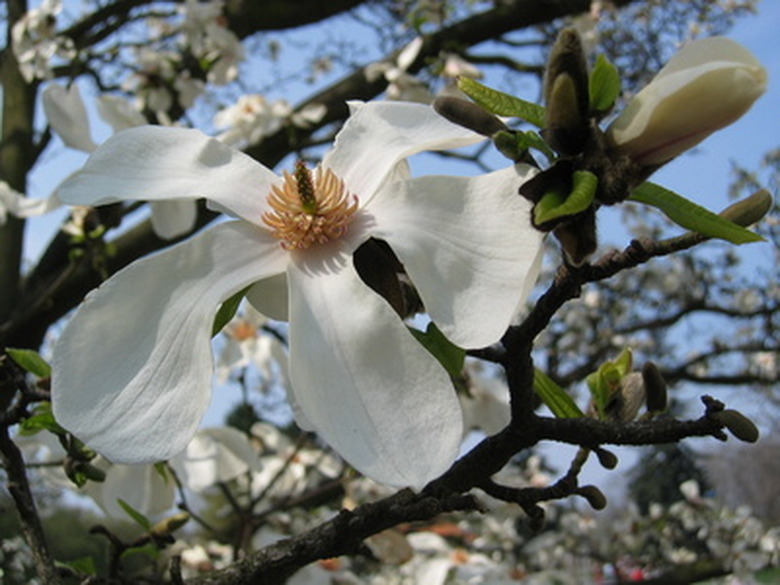Alabama Flowering Trees
Alabama's warm, hospitable climate provides excellent growing conditions for a wide variety of flowering trees. These trees make excellent additions to any home or commercial landscape, adding richness and color during the blooming season which, depending on the species, usually happens in mid to late spring. Flowering trees provide food and shelter for local wildlife and can increase land value if properly maintained.
Southern Magnolia
The southern magnolia is native to Alabama as well as other states in the American Southeast, from eastern Texas down to central Florida and northwards to the Carolinas. The tree does best in full sun but can also thrive in partial shade with the right soil conditions (ideally well-drained, acidic, fertile soils). The southern magnolia is prized in the south as a landscaping tree, though its wood can also be used to make wooden crates and plywood. The southern magnolia needs lots of room due to its massive root structure and slowly decomposing leaves, so don't expect flowers, grass or other plant life to grow anywhere near it. This tree produces large, sweet-smelling white flowers that are the state flowers of both Mississippi and Louisiana. This tree will grow up to 90 feet in height and is usually 2 to 3 feet in width.
Crapemyrtle
Crapemyrtles, or lagerstroemia indica, are popular landscaping trees in Alabama and produce bulbous, brightly colored flowers throughout the spring and summer. These flowers can be so heavy that they weigh down the branches, so you should cut them back periodically to maintain optimal health. There are several dozen crapemyrtle varieties that produce a wide range of colors, including white, violet, lavender, pink, fuchsia and red. These different cultivars also vary significantly in height, from as short as 3 feet to as tall as 30 feet. Crapemyrtles are relatively hardy trees but they are susceptible to frost, fungus diseases, Japanese beetles and the crapemyrtle aphid, which sucks sap out of its leaves. Common varieties of the crapemyrtle include Apalachee, Chickasaw, Comanche, Yuma and Seminole.
Tulip Tree
The tulip tree, also known as yellow poplar, white poplar, tulip poplar and whitewood, is a common flowering tree in Alabama and most of the Southeast. This tree can live over 300 years and can grow to be over 200 feet tall in the right conditions. The tulip tree needs rich, deep, well-drained soil and survives best in forests and low-lying mountainsides. The tulip tree's wood is highly valued for its versatility and is used in furniture building and framing. The tulip tree begins to produce flowers after about 20 years of age, and does so between April and June. These flowers are pale yellow with a bright orange ring around the center. Among the tulip tree's main pollinators are beetles, flies, bumblebees and honey bees. Common pests that affect the tulip tree include tuliptree scale, yellow-poplar weevil, Colombian timber beetle and rootcollar borer.
